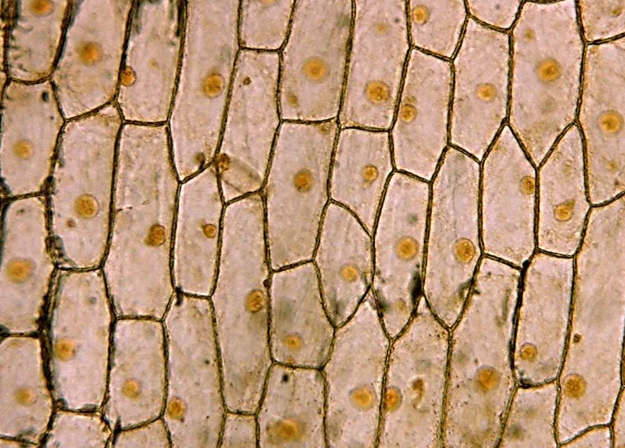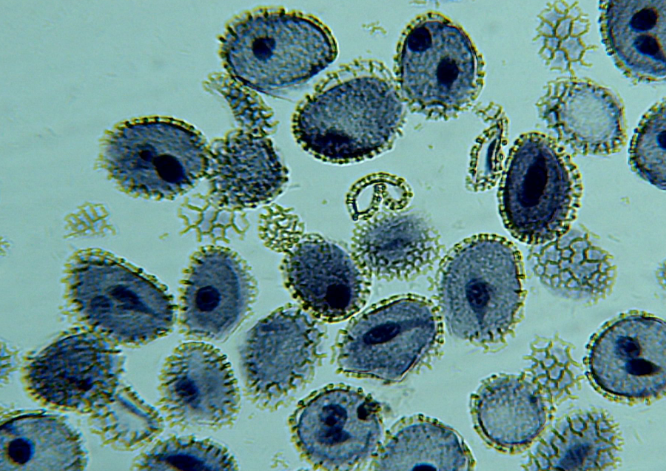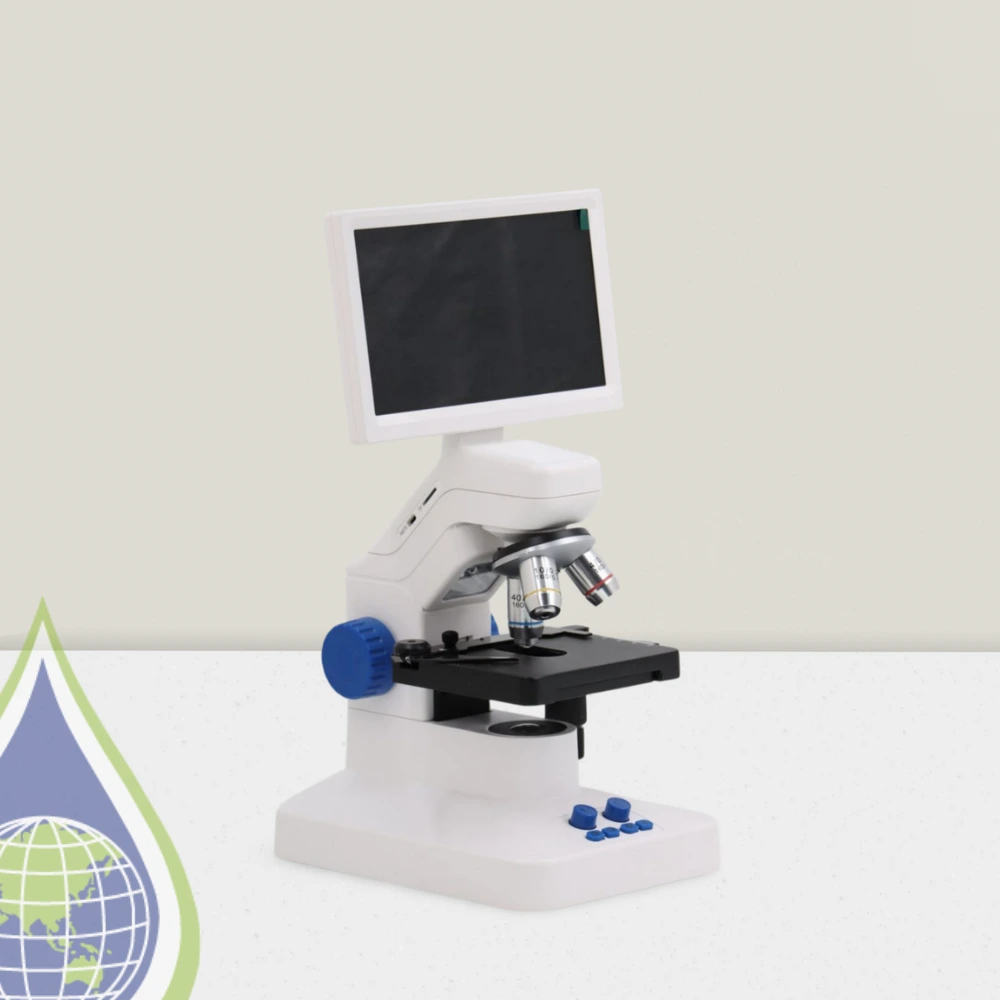
Top 5 Microscope Experiments for Students Using the SMART Student Biological Microscope
Investigating Plant Cell Structure (Onion Epidermis Slide)
- Comparing Animal and Plant Cells (Human Cheek Cell vs. Plant Stem Slide)
- Exploring Microorganisms (Yeast Slide)
- Examining Invertebrate Structures (Insect Wing Slide)
- Investigating Plant Reproduction (Pollen Grain Slide)
Exploring the microscopic world is one of the most exciting ways to spark curiosity in science classrooms. The SMART Student Biological Microscope is designed to support the Australian Curriculum: Science, helping students investigate biological structures and develop hands-on scientific skills.
With the included prepared slide kit, students can conduct real experiments that align with key curriculum outcomes such as cell structure, classification, ecosystems, and microscopic organisms. Here are the top five experiments to get started.
You can perform a wide range of microscope experiments to explore the hidden world around you. Try preparing and observing cells from a human cheek or onion peel to learn about cell structure. Examine microorganisms in pond water to see living organisms in motion. You can also observe the cellular patterns in everyday materials like wood, fabric, or sand. For more interactive microscope activities, study osmosis using potato or onion slices, test how temperature affects yeast growth, or analyze the fine details of money, insect wings, or plant leaves. These engaging experiments make microscopy both educational and fun for students and science enthusiasts.
Microscopes in education statistics
“Three-quarters or more of Australian Year 8 science lessons were taught by teachers who said they had sufficient access to microscopes (and other science resources).”
Teaching Science in Australia Results from the TIMSS 1999 Video Study
1. Investigating Plant Cell Structure (Onion Epidermis Slide)
Curriculum Link: Science Understanding – Biological Sciences (ACSSU149: Cells are the basic units of living things).
Students can examine the onion epidermis slide to identify the cell wall, cytoplasm, and nucleus. This classic experiment helps students visualise the building blocks of plants and compare them to animal cells.
This can be easily viewed with the SMART Microscope via its massive 7inch LED screen.

Onion epidermis plant cells viewed under the SMART Student Microscope.
2. Comparing Animal and Plant Cells (Human Cheek Cell vs. Plant Stem Slide)
Curriculum Link: Science Inquiry Skills – Planning and Conducting (ACSIS140).
Using the human cheek cell and plant stem slides, students can compare the differences between plant and animal cells. This experiment highlights structural differences such as the cell wall in plants versus the flexible membrane in animal cells, as well as unique features like chloroplasts found only in plants.
The SMART Student Biological Microscope makes this comparison clear with its high-quality optics, LED illumination, and easy focusing system, allowing students to view fine details such as nuclei, cytoplasm, and cell walls. Its robust, student-friendly design ensures consistent results, even for beginners, helping align with the Australian Curriculum’s focus on developing observation and classification skills.

Plant stem vs. human cheek cell comparison under SMART Student Microscope.
3. Exploring Microorganisms (Yeast Slide)
In this part of the Top 5 Microscope Experiments for Students Using the SMART Student Biological Microscope, students can explore the fascinating world of microorganisms by viewing the yeast slide. Yeast are single-celled fungi that reproduce through a process called budding, where new cells form and detach from parent cells. This connects directly to the Australian Curriculum by helping students understand microscopic processes that influence larger-scale phenomena, like food production and ecosystems.
The SMART Student Biological Microscope makes this exploration engaging and accurate. With its 1000x magnification and bright LED illumination, students can observe budding cells clearly, track growth patterns, and connect these observations to concepts like fermentation. Its stable stage and easy-to-use focusing system ensure that even beginner students can achieve clear, detailed images without frustration.
For context, yeast is used widely in bread making and brewing, where its ability to ferment sugars produces carbon dioxide and ethanol (CSIRO – Fermentation Science) and plays a crucial role in global food industries (National Library of Medicine – Yeast in Biotechnology). Linking the microscopic view to real-world applications helps students see the relevance of their classroom experiments.

Budding yeast cells observed under SMART Student Biological Microscope for Australian Curriculum experiment.
4. Examining Invertebrate Structures (Insect Wing Slide)
Curriculum Link: Science Understanding – Biological Sciences (ACSSU112: Living things have structural features and adaptations).
Another fascinating activity in the Top 5 Microscope Experiments for Students Using the SMART Student Biological Microscope is examining the insect wing slide. Students can clearly see vein patterns, membranes, and the intricate structures that enable insects to fly and adapt to their environments. This activity links directly to the Australian Curriculum’s focus on classification, biodiversity, and structural adaptations.
The SMART Student Biological Microscope is designed as a durable and high-performing student microscope, making it ideal for classroom use. With its bright LED illumination and precision focusing, students can easily identify the unique features of insect wings at different magnifications. For teachers looking to invest in reliable Australian school microscopes, this model offers excellent clarity and ease of use, ensuring that even first-time users can achieve accurate results.
Studying insect structures also connects to bigger scientific discussions. Insects are vital as pollinators, decomposers, and contributors to ecosystems (Australian Museum – Insects), and their adaptations illustrate the importance of diversity in nature (CSIRO – Insect Ecology). Using high-quality school microscopes like the SMART Student Microscope allows students to observe these details first-hand, reinforcing both theory and practice in science learning.

Insect wing structure observed under SMART Student Microscope for Australian school science experiment.
5. Investigating Plant Reproduction (Pollen Grain Slide)
Curriculum Link: Science Understanding – Biological Sciences (ACSSU116: Flowering plants reproduce through different structural features).
The final activity in the Top 5 Microscope Experiments for Students Using the SMART Student Biological Microscope involves examining the pollen grain slide. Students can see the diverse shapes, sizes, and surface textures of pollen grains, which play a vital role in plant reproduction and biodiversity. This experiment aligns with the Australian Curriculum by highlighting the structures plants use to reproduce and the importance of pollinators in ecosystems.
The SMART Student Biological Microscope is an excellent student microscope for viewing pollen grains, as its high-quality lenses and LED illumination bring out the fine details of pollen structures that are often invisible to the naked eye. For teachers equipping science classrooms, this makes it one of the best Australian school microscopes available, giving students hands-on experience with real biological samples.
Understanding pollen is not only about biology—it connects to broader environmental studies. Pollen is critical for food production, plant diversity, and ecological balance (Australian Native Bee Research Centre – Pollination), and examining it under a microscope helps students see the connection between microscopic structures and large-scale environmental processes. With reliable school microscopes like the SMART Student Microscope, students can investigate these important systems in detail, building both curiosity and scientific skills.

Pollen grains viewed under SMART Student Microscope, ideal for Australian school microscopes in biology lessons.
Why the SMART Student Biological Microscope is Best for These Experiments
The SMART Student Biological Microscope is purpose-built for schools and perfectly suited for the Top 5 Microscope Experiments outlined above. Designed as a durable and reliable student microscope, it provides:
High-quality optics with magnification up to 1000x for clear, detailed viewing of cells, microorganisms, and fine structures.
LED illumination that ensures consistent lighting, making delicate samples like yeast, insect wings, and pollen grains easier to study.
Robust, classroom-ready design that can withstand daily student use, making it one of the most practical Australian school microscopes.
Ease of use, with simple focusing controls and a stable stage, allowing students of all levels to achieve accurate, frustration-free results.
Prepared slide kit included, directly supporting curriculum-based experiments without needing to source extra materials.
When paired with the Australian Curriculum, the SMART Microscope transforms theory into hands-on learning, helping students connect what they observe under the lens with real-world science concepts. For schools seeking reliable, high-performing school microscopes, the SMART Student Microscope is the perfect choice to engage and inspire the next generation of young scientists.



